Excerpts from Jim Conrad's
Naturalist Newsletter
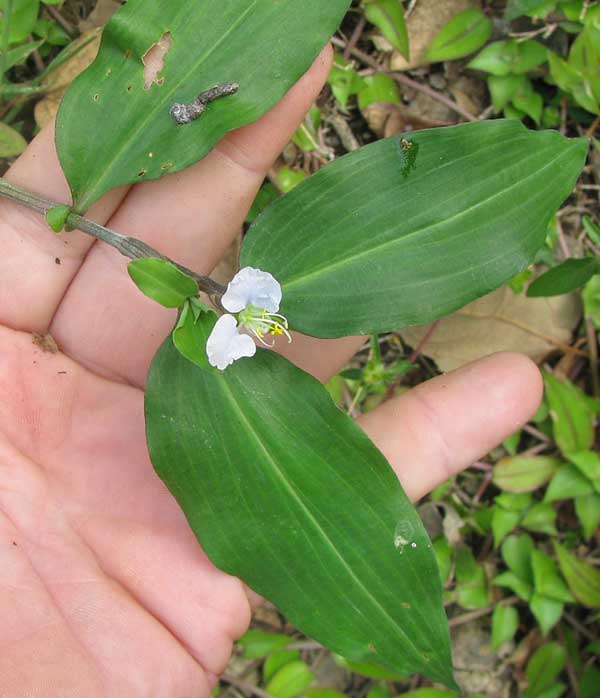
from the February 21, 2010 Newsletter issued from Hacienda Chichen Resort beside Chichén Itzá Ruins, central Yucatán, MÉXICO; limestone bedrock, elevation ~39m (~128ft), ~N20.676°, ~W88.569°
DAYFLOWER
A pretty wildflower/weed flowering soon after any shower that might come along is the white-flowered one with parallel-veined leaves (it's a monocot) shown above. Northern wildflower lovers will quickly recognize this as a dayflower, or member of the genus Commelina, of the Spiderwort Family, the Commelinaceae. It's COMMELINA ERECTA, in older literature called Commelina elegans.
Dayflowers as a group are pretty easy to recognize with their bilaterally symmetrical flowers with three petals, the lower petal being much reduced, as seen below:

Also distinct is how there are six stamens, but with only three being fertile -- their anthers producing pollen. The other three stamens are modified into the sterile, yellow-tipped objects shown in the photo. I'm guessing that the sterile stamens help attract pollinators and provide a hold for the pollinators when they land.
Characteristic of the dayflowers is how several blossoms are cradled within a modified leaf, or bract, folded upon itself at the middle. In the above picture the folded bract is the green, sharp-tipped item occupying the bottom third of the image. You can see a folded bract squeezed open by my fingers to reveal flower buds and an immature flower ready to emerge below:

When you're identifying dayflowers to species level you must pay close attention to the bracts, for some species have the back margins of their bracts joined, forming a kind of cup, while other species are not joined. You can see that this species' rear bract margins are joined.
Another good field mark for this particular species is how the base of each leaf forms a pale, fuzzy cylinder (leaf sheath) around the stem, with a green, triangular pair of earlike "auricles" arising at the juncture of sheath and blade. This can be seen below:
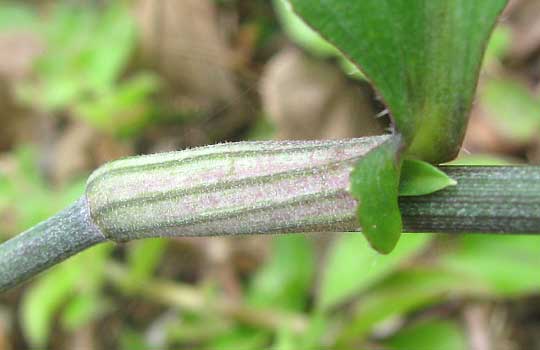
Las Plantas Medicinales de México, which calls the plant Hierba del Pollo, or "Chicken Herb," praises all Commelinas as good for staunching blood, especially for deep wounds and amputations. Chop stems and leaves into a sticky pulp and apply the pulp mass as a compress directly to the wound.
What a pleasure to lie next to this little being, several of whose cousins in the North I've already met, thrusting my mind into these details of color, form, texture and function, remembering how those Northern cousins' details varied, just a little, from this ones', experiencing "variations on a dayflower theme."
from the May 17, 2015 Newsletter issued from Río Lagartos, on the Yucatan Peninsula's northern coast (~N21.60°, ~W88.16°), Yucatán state, MÉXICO
WHITE-MOUTH DAYFLOWER'S BLUE VARIATION
Twining up through a chain link fence along the main road through town a little dayflower was blooming, as shown below:
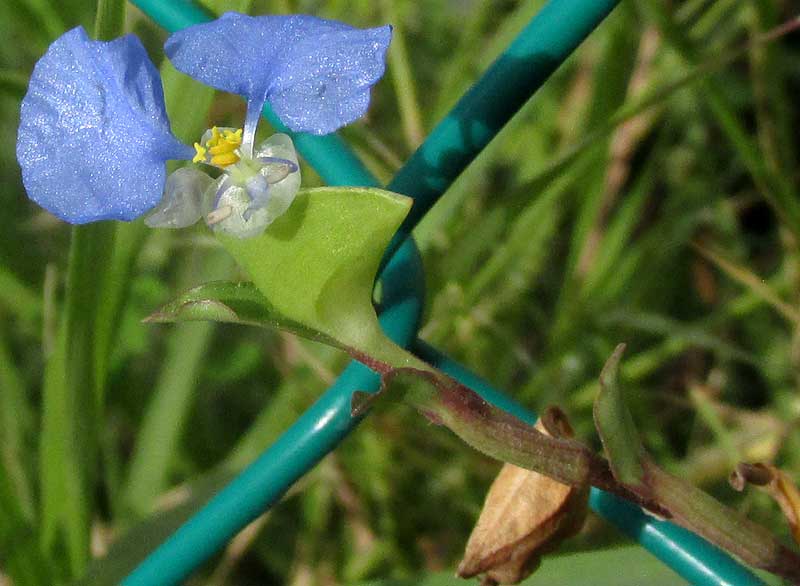
A close-up the above flower is shown below:
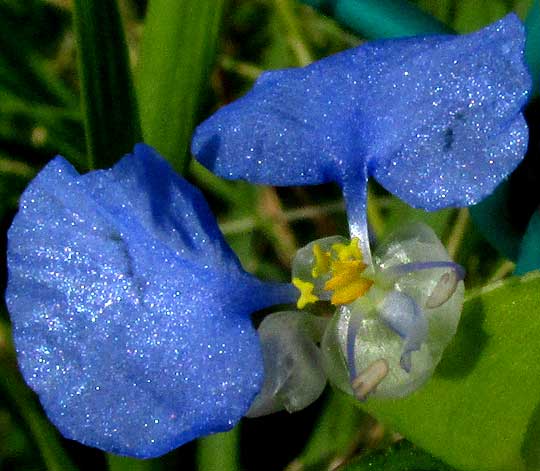
During our travels we've run into several dayflower species and I thought that this was a new one. However, it turned out to be the same species often encountered farther south, just that the top two petals of those usually are whitish.
This is COMMELINA ERECTA, often known as the White-mouth Dayflower, because the lower petal is white and conspicuous. In many dayflower species the lower petal is bluish, smaller or even missing. Commelina erecta is considered to be the most variable species of dayflower in North America, but that large, white, lower petal is constant. The species is native to much of the world, including the Americas, Africa and western Asia. Often it grows as a weed, albeit one with an especially delicate and pretty flower, if you take the time to look at it.
entry dated May 21, 2022, notes from a camping trip among hills about 7kms ENE of Tequisquiapan, Querétaro state, MÉXICO
elevation about 2020m (6700 ft), near N20.57°, W99.85°
A VERY HAIRY DAYFLOWER

Here at the end of an especially dry dry-season the landscape is mostly gray and brown, except in those rare spots at the bases of cliffs and the heads of canyons where spring water seeps to the surface. In such spots a small but lush and green oasis forms, where all through the day birds and other animals come to drink, and plant species turn up not found out in the sunbaked scrub. One of those species, a White-mouthed Dayflower, is shown above.
Its flowers are wilted because it's late in the morning and the air is hot and very, very dry. It's the hairiness that caught my eye. I've never seen such a hairy member of this species. A close-up of a flower is shown below:
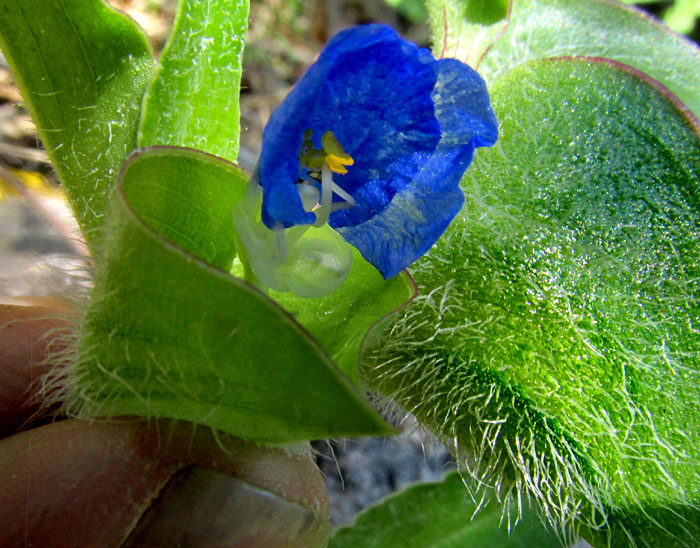
The bract is pinched open so the flower can better be seen, showing that it really is Commelina erecta. Even when open the flower seems to have been on a shorter pedicel than normal, just peeping from the bract, presumably reducing water loss. The plant's roots were in the cliff-spring's water-saturated soil, but the air was extremely dry. Possibly the hairiness also is an adaptation enabling more water retention.